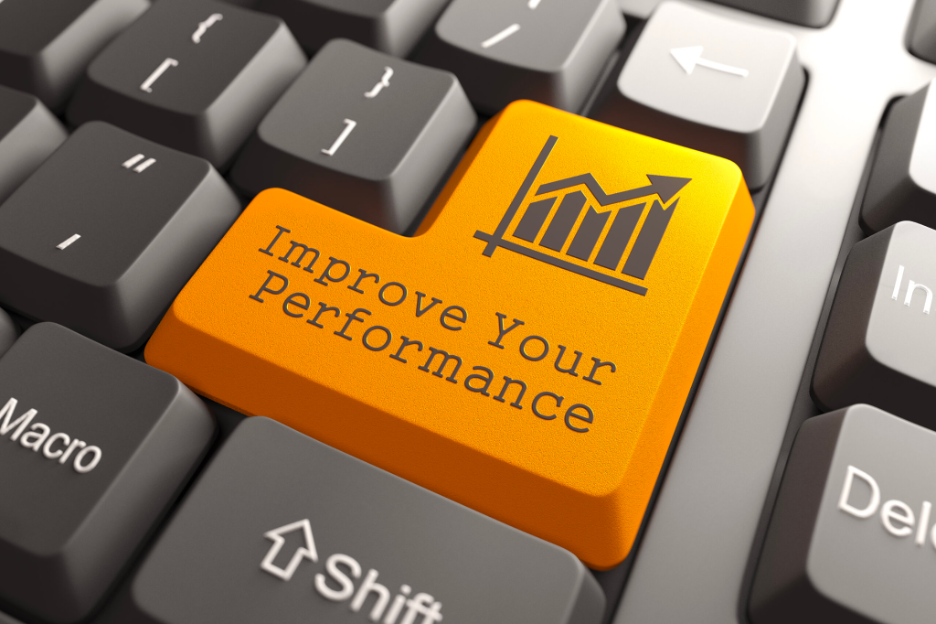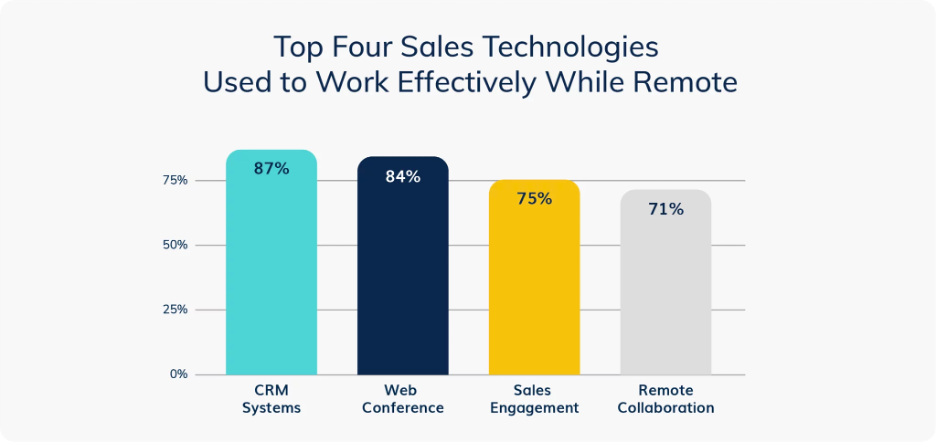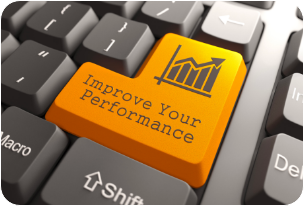Media
Watch our regular Pipe Surgeries where we answer your questions on revenue growth, stay educated with deeper dive blog articles on topics to improve your go-to-market or browse our photo gallery to follow the Pipe Global team on our journey with you.
EPISODE 33
Why does every business
need a sales playbook
EPISODE 32
Recommended reading for improving sales performance
EPISODE 31
EPISODE 30
EPISODE 29
EPISODE 28
Using Sales Data to Win
Sales has traditionally been viewed as an intuition-driven profession.
In recent years, however, sales data and technology has changed the way that sales teams think and feel and has become a welcome companion sitting alongside sales EQ to predict responses of prospects and assist sales teams.
Gut feelings are always going to be valuable to inform the sales approach but across thousands of customer interactions every year per sales rep, data can instantly spot patterns and help empower better decisions and outcomes.
Data-driven sales is the art of using data to make smarter decisions and supports the effort of continuously optimizing through analytical insights.
Data-driven sales helps salespeople understand which activities, or habits, bring them success and which are preventing them from hitting their targets.
How is data valuable in the sales process?
Addresses revised buyer expectations
Power in the sales conversation has been shifting away from sellers toward buyers with so much information available online and in person meetings at an all time low.
Buyers have lower dependency and higher expectations from sellers as a result and expect value from each interaction. Tracking data on how buyers respond to various messaging approaches helps to centralize team strategy around a sales playbook based on results.
They expect sales reps to understand buyer preferences and focus on helping buyers achieve their goals rather than making a quick sale.
Responding to these heightened expectations requires analytics, which can help make sales more personalized, targeted and relevant.
Informs sales messaging
By applying data science to sales, companies and salespeople understand what to focus on when and with what kind of tone and supporting materials in their messaging.
Content analytics solutions allow sales teams to understand what types of content assets are most appropriate for engaging customers and propelling the sales conversation forward at each step of the customer journey.
They give clarity on what is engaging for prospects and how they react. This is a good indicator of what they actually care about—something that will help the sales team by giving it more insights about prospects’ actions. This data can empower members of the sales team to have more thoughtful and productive conversations and drive the process forward.
Generates productivity efficiency
A data-driven sales strategy leverages the data and information being collected across the team during every sales interaction to help generate more effective sales messaging, better anticipate the needs of customers, and create repeatable success with prospects.
Data-driven sales is a sales approach that involves collecting and using specific metrics to inform all sales decisions, from lead prospecting to people management to churn reduction and pricing.
Using sales data can help AEs become more productive and improve performance.
It can also save them precious time and energy pursuing customers who aren’t a good fit or are not interested and focus on the deals that are more likely to close.

Photo credit: Shutterstock
Promotes evidence based learning culture
It is far easier to encourage other team members to follow a similar strategy if there is clear evidence of its impact.
A data driven sales team is constantly sharing best practices with one another and making the recommendations easily accessible especially in the WFH and hybrid selling environments of today.
Sales data tools should seamlessly connect with the CRM to check the impact on deal progression.
A data-driven sales team should follow a distinct sales process and playbook — a repeatable set of actions to close a new customer.
A sales data process allows you to see instantly which parts of your sales approach are working and which parts aren’t.
When making changes or updates to sales process usually the key is to do it slowly and with transparency across the team. This allows the team to get used to the change and to clearly see if that change is benefitting or hurting the overall sales process.
But by bringing in data and analytics the process can be fast forwarded and create a more dynamic streamlined organization.
Indeed incorporating data and analytics into the sales process takes the guesswork out of sales.
The companies using an array of tools to analyze sales data at scale are likely to see the biggest benefits of this trend.
Synchronized Sales
The shift to a remote selling environment has accentuated the importance to companies of developing a standardized and consistent framework for their sales teams. It is particularly critical for onboarding new hires and ensuring on an ongoing basis that their salespeople are trusted and considered to be experts.
In the LinkedIn 2021 State of Sales survey buyers identified a number of behaviors from sellers that were immediate deal killers. Each of the top three revolved around the salesperson providing inaccurate information about their own company and demonstrating insufficient knowledge to establish trust:
48% complained of receiving misleading information about a product, its price etc.
44% referred to the salesperson not understanding their company and its needs
A staggering 43% didn’t even demonstrate a clear understanding of their own product or service *1
It is hard enough to educate salespeople on the product and industry and how to consistently hit their targets when onboarding, training and managing them in the office so these issues are even more pronounced when working remotely.
So how is the industry dealing with the remote working challenge?
Not very well according to a Sandler Research Center survey which revealed 67.5% of sales leaders reported not having received any training whatsoever on leading remotely. And it is therefore no surprise that 42% of frontline sales professionals have not even been adequately trained on how to sell remotely. *2
To lead successfully in a remote setting environment, sales managers must find ways to accelerate the speed of communication to provide their team with fast, transparent, and inclusive information on sales scenarios and suggested best practices. This gives remote salespeople purpose and direction, and it allows managers to delegate authority whilst still supporting quick actions and decision-making by their team members. For new hires an effective remote onboarding process ensures sales reps are ramped up faster to close deals sooner.
Customers expect connected, personalized engagement from sales teams and brands. The sales teams that can adapt quickly will be increasingly effective in a remote sales environment. Salespeople need to know what to say and what to send at each stage in the process.
Remote sales collaboration and synchronization doesn’t happen naturally. It’s dependent on an online environment that needs to be coached, nurtured, and empowered with the right tools.
How to streamline remote sales
1. Alignment: Success and speed come from co-ordinating around a sales playbook. This requires consistent messaging from the initial SDR outreach to the post demo follow up process, emails and standard company documents.
The playbook must be a constant work in progress with all team members encouraged to share their input on what is proving successful for them. It needs to be a living, breathing repository with the ability to refine and advance it quickly.
An example is standardizing email templates from the sales team so that core company documents can be accessed easily, there are standard prompts to reply to technical concerns, guidelines on messaging length and tone and consistency on pricing and discounts.
The key is to ensure shared information is accessible and updated regularly.
2. Tech tools: Research from “The New Normal: B2B Sales and Digital Transformation 2021” by Groove examined how technology is helping sales teams adapt to a remote-selling environment.

Interestingly it found that sales engagement technology was ranked even above remote collaboration as an effective sales tech tool and that almost half of salespeople have already been embracing the use of sales automation technology from home.
The Linked State of Sales Report 2021 found “77% of sales professionals say their sales organization plans to invest “significantly more” or “more” in sales intelligence tools.” *1
3. Collaborative mindset
Remote sales teams need to connect with each other in real-time through tools like Slack to streamline the sales process, assist each other to close deals and deliver a compelling customer experience. Online collaboration has to be as smooth as convenient as possible providing the ability to reach out to colleagues in seconds. When sales teams collaborate online they’re able to streamline workflows. They don’t need to rely on clunky email chains to get the information they need instantly.
The goal is to establish an open environment where your team members feel comfortable asking questions. Users should also be able to write direct messages to their managers or colleagues when they don’t want to ask a question in a group chat.
4. Performance monitoring
CRMs and related tools can give sales managers the real-time information they need to better manage, measure activity levels and their impact, and to coach and empower their remote teams.
Robust visibility around task management is an essential remote collaboration tool for holding sales team members accountable to management, staying on task, and ensuring their success.
The benefits of a synchronized sales approach
Managers benefit from immediate insights when everyone is working to the same procedures. There is no hiding place for the weaker performers.
By analyzing email open and response rates to easily accessible standard company templates it is possible to quickly discover valuable actionable insights on customer interest or lack thereof and adjust the core messaging accordingly.
Repeatable sales processes makes the job more predictable and less stressful especially when working independently and can save a significant amount of time pondering on the next action point. A collaborative mindset streamlines workflows, allowing sales professionals to save time spent on administrative tasks and spend more time sealing deals.

Students practice their moves in unison at a large martial arts school in China. Credit: Getty Images
Crucially it strengthens team spirit. Better communication and sharing amongst colleagues brings significant benefits:
It removes the unhealthy competitive aspect of sales where often there is a reluctance to share ideas.
It instills a sense of camaraderie and being aligned with colleagues especially in a remote working environment which can lead to feelings of disconnection from colleagues, isolation and loneliness.
It fosters a more productive environment and improves employee satisfaction by ensuring team members are supported and engaged with what they’re doing.
And ultimately a consistent sales process and service knowledge expertise helps the customer too. It boosts trust and enables a smoother and more efficient purchasing experience.
*1 https://www.linkedin.com/business/sales/blog/trends/the-linkedin-state-of-sales-report-2021
*2 https://www.sandler.com/blog/sandler-research-center-survey-highlights-challenges-for-sales-leaders-in-2021/
Real-time sales coaching
The annual sales kick-off is now an established fixture in the calendar and many of these events include tactical sales training sessions focusing on insights and new techniques to try in the new year.
But unless it is a kick start for an ongoing sales training plan then its impact will be diluted and a wasted opportunity.
Good salespeople appreciate the power of a strong ROI when pitching their own products and unsurprisingly there is a direct co-relation between coaching and sales success.
Managers at high-impact sales organizations (where > 75% of sales reps hit target) are more proficient at sales coaching and invest more time coaching their teams than managers at average sales organizations (where 25% – 75% of reps hit target) and low performing organizations (where < 25% of reps hit target).

Source: 5 Hallmarks of High Impact Sales Organizations report
Sales coaching focuses on helping AEs develop the skills, knowledge, and use of strategies to boost sales results. Based on this definition, it’s obvious why AEs benefit from coaching when developing sales skills alongside strong industry and product knowledge.
For sales coaching to be impactful it has to be iterative and personalized.
A high attention environment and individualized performance improvement prompts are key to turning the mid level players (who traditionally respond best to coaching) into sales superstars.
But despite companies spending over $20 billion a year on sales coaching, The Rain Group found that 85 to 90 percent of training fails within 120 days after its delivery. *1
This is because often sales coaching is sporadic and not re-enforced on a consistent basis, nor is it upgraded as circumstances and market knowledge changes.
Sales coaching tends to be prioritized on onboarding new hires and educating reps about the product, processes and tools. Certainly it is crucial for new reps to know the benefits of the product, how to use the sales stack, and how to log their activities and monitor their performance.
Yet, even with the proper training, both they and their colleagues easily forget what they’ve learned without the correct tools to nudge and prompt them.
Indeed one of the biggest problems of training is knowing how to apply what you’ve learned in real situations. Each circumstance is different and the true difficulty is knowing how to use what you’ve learned. For this either continual practice and mentoring, or else augmentation provide the solution.
The top sports coaches are experts at in-game management, able to adapt tactics immediately and switch positioning and personnel as circumstances demand as a match unfolds. And similarly the most effective sales leaders empower their reps by giving them the ongoing insight and tools they need for continued real-time development and improved business outcomes.

Image: Reuters
Indeed real-time coaching is so influential to sporting outcomes that it is banned in all tennis matches on the mens’ tour where it is forbidden for a player’s support team to even signal or shout out an instruction. The top players like Federer resisted calls to allow coaching as the ban gave them a huge advantage. The great champions through the years have often been the best problem solvers under pressure, which is part of the appeal of the ban for them as lesser players struggle to adapt.
So how can sales leaders use the immense power of real-time coaching to enable their AEs to solve problems, remove bottlenecks in the process and drive revenue growth?
What tools can they deploy to simultaneously coach a team of several AEs to reach the same desired level of success?
Sales dashboards that monitor individual and overall performance and assist with task management are key for coaching at scale, as well as conversation and email analytics platforms that can monitor and alert coaches in real-time if their attention is needed with a particular rep.
Clearly sales leaders can’t be on every sales call to say where it drifted away nor can they instantly check every email to confirm consistency of company messaging or explain why the tone is wrong or it is too wordy.
In a January 2021 survey of 248 sales leaders 76% said that not being physically present with their team has made it harder to observe and coach. *2
Therefore the goal should be to equip the team with a dynamic sales playbook at their fingertips. Buyers expect expertise and knowledge and AEs must have seamless access to all the relevant information so they can answer every question confidently, promptly and correctly.
Deals can be closed faster and conversion rates are higher with access to real-time shared cues that are akin to having the sales leader constantly by your side as a guide.
Sales leaders need support from their top performers. It is vital to analyze winning behaviors and understand what their A players do differently and enable them to share best practices with their colleagues. By identifying correlations between actions and deal outcomes and encouraging a collaborative culture it is possible to reinforce healthy behaviors across the entire team.
*1 https://whitepapers.lakewoodmediagroup.net/sites/default/files/Why%20Sales%20Training%20Fails.pdf
*2 https://www.allego.com/blog/virtual-sales-coaching-trends/
The Imitation Game
To succeed in sales it is vital to master the art of mirroring.
We are born with the ability to mimic and mirror and use it to learn, as a bonding tool and a way to show empathy – three key ingredients in sales.
In a series of experiments conducted by Emese Nagy in 2014 2-day-old infants were more likely to raise their index fingers after seeing their mothers do the same.
Our likeability brought about through bonding and empathy significantly increases the chances of making a sale. The challenge is how can we develop this with sales prospects over a short time period? This all begins with sales mirroring — subtly imitating the behaviors and communication styles of our prospects.
The Importance of Mirroring in Sales
We all have a natural predisposition to mirroring. In sales, mirroring is effectively a shortcut to familiarity. Rather than a long history of shared experiences giving rise to similar phrasing or gestures, salespeople can mimic these traits to create a sense of familiarity quickly. Mirroring increases trust between the salesperson and prospect because it blurs the line between business and personal interactions and potential customers are often more willing to work with someone they feel they can trust.
Research conducted by Harvard Business Review and summarised in the article ‘Want To Win Someone Over? Talk Like They Do’ concluded that ‘linguistic mirroring’ (adjusting your communication style to match that of your audience) is a highly effective way to increase your influence on others. *1
Sales Mirroring in Written Communication
Mirroring is as relevant in email communication as it is when speaking.*2
With it being harder than ever to reach sales prospects on their work phone due to remote or hybrid set-ups there is a much greater dependency on emails in the entire sales cycle from the first SDR outreach to an AE’s post demo communication.
Today emails, texts, and LinkedIn messages all have their own ‘Digital Body Language’ (a phrase coined by Erica Dhawan in her book of the same name) in the business world. Dhawan says “We are tone deaf. We need to become tone deft in a digital world.”
Most digital miscommunication happens because we don’t have access to the non-verbal cues, including tone of voice, body language, and facial expressions. But we can read between the lines if we know what to look for and how to mirror it in a sales process.
Our word choice, response times, and even our punctuation and use (or non-use) of emojis or gifs should mirror and match the tone of the prospect to boost engagement and sales results.
There is not a single sales mirroring language to master. There are different languages, dependent on age, gender, culture, personality and even by messaging channel.
According to Dhawan “Women are more likely to use exclamation points to come across as friendly, warm and approachable whereas men are more likely to use them to signal urgency.”
We are not bound to one or two communication channels. Switching between channels is a good way to indicate a shift in urgency of a message. I closed a sale by virtue of switching to WhatsApp from email which made the sales process more relaxed and made it easier to mirror the communication style and pace of responses.
Here are some tips on how to become tone deft in sales messaging:
- Write the same language:
Pay close attention to the prospect’s written communication.
Do they use more complicated words, do they condense intricate thoughts into simple terms, or do they stick to basic ideas?
Do they use industry jargon?
Are they formal or casual in their messaging?
Attempt to match their written style, as well as the terms they use.
- Understand the prospect’s personality type:
Does the customer want every detail about their purchase or are they more concerned with the bigger picture and vision?
Do they seem more interested in small talk or want to get straight down to business?
Are they analytical and focused on data when deciding about a potential purchase?
Are they a forex trader used to making snap risky decisions or are they working in cyber-security where they are more likely to be cautious and slower to commit?
Take a cue from your prospects, adjust the conversation accordingly to reflect how they want to absorb information and avoid just regurgitating the same sales pitch.
- Use shared simple language:
Prospects are more satisfied when salespeople engage with them using emails that are worded in a simpler shared language. A simpler and more direct communication with a sales prospect helps reach the goal of keeping them informed in a language that they can understand. Customers’ concerns should be addressed with a language that is not overly complex.
No matter their communication style, take a cue from your prospects, and avoid leaning into familiar sales pitch frameworks.
As Dhawan says “Writing clearly is the new empathy”.
Footnotes:
*1 https://hbr.org/2020/12/want-to-win-someone-over-talk-like-they-do
*2 https://www.sciencedirect.com/science/article/abs/pii/S0148296317300577
(Featured image – Getty Images)
Guided Selling
Sales teams operating without a guided selling process in 2022 are like motorists still unfolding maps in their car to plan their route today. Why rely on a static map when Waze provides turn by turn navigation information in your ear, updates on changing traffic and faster routes in real-time, warns of accidents and taps into a community of road users offering advice based on their experience of the roads ahead?
Guided selling integrates software and AI to help AEs sell more effectively throughout the entire sales cycle by recommending the best content, actions, and communication tactics for any given sales situation. It acts as a dynamic interactive map tapping into best practices with AI identifying the relationship between action and results.
Guided selling is a smart system that reacts to each deal dynamically, providing sales reps and leaders with the information and guidance they need on-demand. This enables AEs to always know next actions, ensures they are permanently up to date with changes to their sales opportunities, and allows them easy access to the materials and techniques to advance their deals as effectively and efficiently as possible.
In a December 2021 report, Gartner predicted 75% of B2B sales organizations will supplement traditional sales playbooks with AI guided selling solutions by 2025.
Gartner stated “Sellers can no longer exclusively rely on intuition-based selling to push a deal over the finish line.”
Elizabeth Beard of the Gartner Sales practice said “Progressive sales organizations are already using AI to determine what content resonates with buyers and then recommend tools and content to share with the buyer now. This helps to connect buyers with information to better answer their questions – filtering out the noise – and provides a better customer experience”.
AI-based guided selling has four primary components according to Gartner (please see diagram below) and comes in two forms: prescriptive (recommended next best actions such as what content to send next to a prospect), or predictive (insights that reveal statistically relevant indicators about sales process steps).

So why is guided selling such a critical component of B2B sales today?
- Sales organizations need to align buyers and sellers. The goal is to create a consistent dynamic sales process providing sellers with intelligent recommendations of how to best add value in response to buyer-driven signals in real-time.
- Buyers expect value with each engagement with the company. When the communication consistently adds value, sellers can more easily move into the coveted “trusted advisor” position that helps them win more deals.
- Companies need to respond quickly and with the appropriate messaging to the requirements of the prospects to keep the sales momentum going and make every interaction meaningful. Delays and incorrect information due to lack of knowledge seriously harms the success of the sales process.
AI-based guided selling is a constant reliable companion for AEs, leveraging analytics to provide the best advice.
While developing an advanced sales technology roadmap, sales leaders must prioritize where AI-based guided selling functions would be most relevant by identifying the least efficient parts of the sales value chain. This can include processes that require a lot of educated guesswork or are time consuming, such as what to do next on a complex B2B deal or how to respond to a set of technical questions over email.
What are the key goals in a guided selling set-up?
1. Automate the sales playbook to support sales success
Guided selling begins with a strong foundation of methodologies, blueprints and plays. It aligns the sales process with the buyer journey by laying out the steps to follow. It precisely tells sales teams what to do, how to react and what to communicate in a given sales scenario
2. Enable real-time response
An effective guided selling platform must be adaptive and dynamic, linked to data and responsive to changing circumstances in real-time.
3. Recommend relevant sales content and generate proposals
We spend too much time on admin and research before engaging with buyers. Guided selling helps increase efficiency by automatically recommending the most appropriate content to share based on the scenario and the buyer personality and produces individualized sales proposals for customers quickly and efficiently.
4. Support onboarding & training
The aim is to boost sales confidence and increase information retention so reps continue to learn and plug knowledge gaps and focus on integrating short reference aids. The guides act as virtual mentors, allowing new reps to benefit from the experience and wisdom of the top performers.
5. Integrate with existing sales stack
The system will learn from historical data and serve up the training, content and recommended next steps most likely to yield the desired outcome based on contextual clues. The guided selling software must synchronize with the CRM, sales communications and engagement analytics to confirm ROI and know which sales collateral is most effective at each stage.
In a guided selling framework every buyer engagement generates data that gives insight into sales activities and their impact. How and when was a specific content asset shared? How did buyers interact with specific content?
By assisting with the management of routine tasks, guided selling also helps identify patterns that lead to
more intelligent decision-making in the sales process, allowing reps to adjust faster to various sales scenarios
and drive revenue growth for the organization.
Ultimately the success of any tactic is judged on the results.
According to a McKinsey study companies that take advantage of guided selling platforms to continuously
test and improve their sales processes drive significantly more revenue than their competitors and were
three times as likely to report revenue gains greater than 10 percent.
And high-performing sales teams are 2.3 times more likely than underperforming teams to use guided selling
according to Salesforce State of Sales report.





